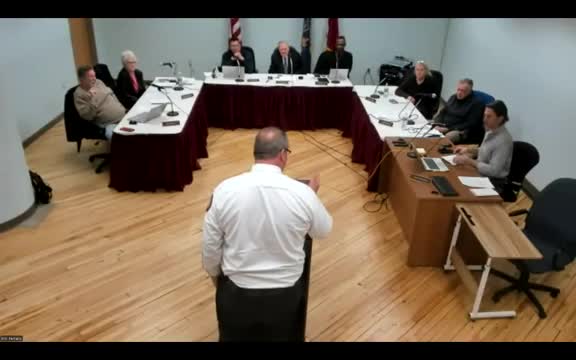Fire department raises safety concerns over proposed 36-unit development in overcrowded site
November 01, 2024 | Troy, Rensselaer County, New York
This article was created by AI summarizing key points discussed. AI makes mistakes, so for full details and context, please refer to the video of the full meeting. Please report any errors so we can fix them. Report an error »

In the heart of Troy, New York, the Planning Board convened on November 1, 2024, to address pressing concerns surrounding a proposed development project that has sparked significant debate among city officials and residents alike. As the meeting unfolded, the atmosphere was charged with urgency, particularly regarding public safety and the implications of the proposed changes to an existing building.
The focal point of the discussion was a plan to convert a building into a 36-unit single-room occupancy (SRO) facility. However, members of the Planning Board raised serious questions about the feasibility of such a transformation. One board member, reflecting on the building's current state, noted that it was originally designed with only 12 bedrooms, suggesting that the proposed increase could overwhelm the structure and the site itself. "The existing building and the site can't support what's proposed," he stated, emphasizing that every inch of the property had already been developed.
Concerns about fire safety were paramount during the meeting. The local fire department had not been consulted adequately regarding the proposed changes, particularly about the absence of sprinkler systems and the potential risks associated with a higher occupancy. "If that was turned into a 12-unit SRO, there are implications there for fire and life safety that were not addressed at all for permitting purposes," another board member pointed out. This highlighted a critical gap in the planning process that could endanger future residents.
The board also discussed the need for an immediate site inspection to assess the building's compliance with safety codes. "We need to know how many students are currently in the building and whether it is sprinkled," one member urged, indicating the necessity for a thorough evaluation before any decisions could be made.
As the meeting progressed, it became clear that the board's primary concern was the safety and well-being of the community. The discussions underscored the importance of collaboration between various departments, including engineering and legal, to ensure that all aspects of public safety were considered. "Life safety is really what's driving this whole discussion," a member concluded, reinforcing the notion that any development must prioritize the health and safety of Troy's residents.
With the future of the proposed project hanging in the balance, the Planning Board's commitment to thorough scrutiny and public safety remains a beacon of hope for the community. As they prepare for further inspections and discussions, the residents of Troy watch closely, eager to see how their city will navigate the complexities of urban development while safeguarding their neighborhoods.
The focal point of the discussion was a plan to convert a building into a 36-unit single-room occupancy (SRO) facility. However, members of the Planning Board raised serious questions about the feasibility of such a transformation. One board member, reflecting on the building's current state, noted that it was originally designed with only 12 bedrooms, suggesting that the proposed increase could overwhelm the structure and the site itself. "The existing building and the site can't support what's proposed," he stated, emphasizing that every inch of the property had already been developed.
Concerns about fire safety were paramount during the meeting. The local fire department had not been consulted adequately regarding the proposed changes, particularly about the absence of sprinkler systems and the potential risks associated with a higher occupancy. "If that was turned into a 12-unit SRO, there are implications there for fire and life safety that were not addressed at all for permitting purposes," another board member pointed out. This highlighted a critical gap in the planning process that could endanger future residents.
The board also discussed the need for an immediate site inspection to assess the building's compliance with safety codes. "We need to know how many students are currently in the building and whether it is sprinkled," one member urged, indicating the necessity for a thorough evaluation before any decisions could be made.
As the meeting progressed, it became clear that the board's primary concern was the safety and well-being of the community. The discussions underscored the importance of collaboration between various departments, including engineering and legal, to ensure that all aspects of public safety were considered. "Life safety is really what's driving this whole discussion," a member concluded, reinforcing the notion that any development must prioritize the health and safety of Troy's residents.
With the future of the proposed project hanging in the balance, the Planning Board's commitment to thorough scrutiny and public safety remains a beacon of hope for the community. As they prepare for further inspections and discussions, the residents of Troy watch closely, eager to see how their city will navigate the complexities of urban development while safeguarding their neighborhoods.
View full meeting
This article is based on a recent meeting—watch the full video and explore the complete transcript for deeper insights into the discussion.
View full meeting
